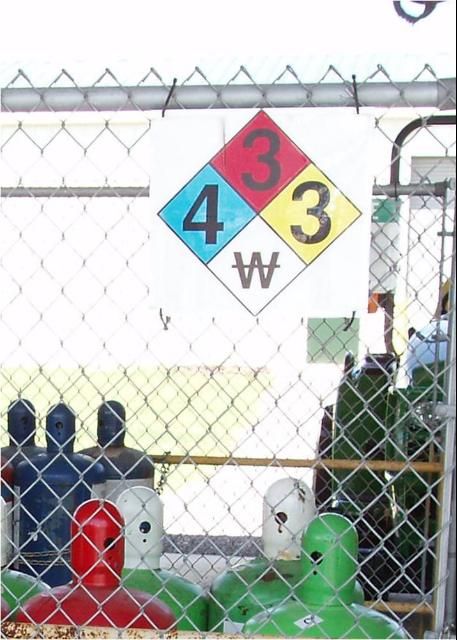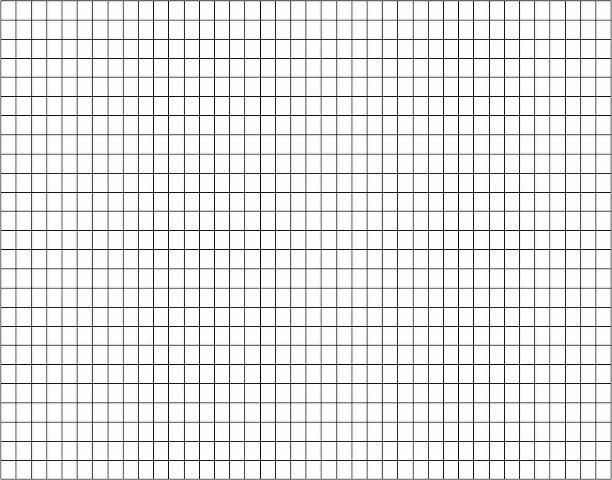Fires pose a special hazard in pesticide storage facilities. In addition to the danger of the fire itself, other dangers are associated with pesticides in this situation.
Introduction
Pesticide products vary significantly in their flammability and the related hazard they pose in storage. Flammable pesticides typically include the following precaution in the label statement: "Do not use or store near heat or open flame." These warnings will be found in the Physical and Chemical Hazards Statements on the product's label (see Figure 1).

Credit: Crop Data Management Systems, Inc.
Pesticides containing oils or petroleum solvents are the most flammable and likely to have these warnings, although certain dry formulations also present fire and explosion hazards.
Potential problems associated with pesticide fires include the following:
-
The pesticides may be highly flammable or explosive.
-
The pesticides may give off highly toxic vapors or smoke that may harm firefighters, nearby residents, animals, or plants.
-
Pesticide residues may be present in the debris and soil following a fire at a pesticide storage facility.
-
Runoff from the fire site may contain highly toxic chemicals.
Take Precautions
Emergency or contingency planning is the cornerstone of a responsible action plan. Coordinate with local emergency-response officials all details concerning response to a fire, and review the emergency plan at least annually.
Advisable proactive measures also include the following:
-
Locate the storage facility as far as possible from places where people and animals live.
-
Notify the local fire department of the location and contents of the pesticide storage facility.
-
Carefully map a floor plan of the facility and the immediate surrounding area. Be sure emergency responders have this map in advance of any emergency, so they will know the facility layout.
-
Train local workers in execution of the emergency plan.
-
Keep the storage facility locked at all times.
-
Post signs that indicate pesticides are stored in the facility (Figure 2).
-
Store combustible pesticides away from steam lines and other heating systems.
-
Do not store glass or pressurized containers in sunlight, where they can concentrate heat and possibly explode or ignite.
-
Keep a written inventory of the pesticides held in storage and file the list away from the storage facility.
-

Figure 2. Post signs that indicate pesticides are stored in the facility.
Credit: F. M. Fishel, UF/IFAS
If a Fire Occurs
Prompt and responsible action is essential in the event of a chemical fire.
Take the following actions in the event of a chemical fire:
-
Evacuate the premises.
-
Notify the fire department and inform the firefighters of the nature of the pesticides involved.
-
Provide emergency-response personnel with a material safety data sheet (MSDS), which includes technical and emergency information.
-
Keep people away; establish a security perimeter to discourage onlookers.
-
If significant smoke is generated, evacuate all people and animals in the vicinity, especially those downwind.
-
Contain small fires with fog, foam, or dry powder. If only water is available, use it as a fine spray or fog. Use only as much water as absolutely necessary. Do not use water jets because they can break bags and glass containers. If using water to fight pesticide fires, be careful not to spread the contamination to the surrounding area through water runoff.
-
Make sure water and spilled chemicals are being contained. For larger fires, consider withdrawing and allowing the fire to burn out. This option is preferred over using water to fight the fire because using water can lead to widespread environmental contamination. If runoff water cannot be avoided, build dikes to contain the contaminated water.
-
Clean and dispose of equipment and all clothing. All personnel involved should shower after fighting the fire.
National Fire Protection Association
A hazardous rating system used to assist emergency response personnel is the National Fire Protection Association (NFPA) Hazard Identification System. This system uses a diamond-shaped warning symbol. The top, left, and right boxes refer to flammability, health, and instability hazards, respectively, and each contains a number from 0 to 4 (Table 1). The bottom box is a warning against the use of water. Some pesticides and their storage sites will be marked with such a warning to alert firefighters not to use water to put out a fire (Figure 3).

Credit: F. M. Fishel, UF/IFAS
Pre-Fire Plan
Reduce the risk of a fire before it happens. Discuss this pre-fire plan with the local Chief Fire Control Officer. Post a copy of the plan in your place of business and have additional copies readily available.
Facility Name _____________________________
Location _________________________________
Telephone Number _________________________
Emergency Telephone Numbers for Facility
Day:______________________________________
Night: _____________________________________
Manager of Facility _________________________
_________________________________________
Asst. Manager _____________________________
________________________________________
Alternate _________________________________
_________________________________________
Fire Department __________________________
_________________________________________
Physician _________________________________
_________________________________________
CHEMTREC (Chemical Transportation Emergency Center): (800) 262-8200
Florida Poison Control Center: (800) 222-1222
Florida State Watch Office: (850) 413-9900 (Non-emergencies); (800) 320-0519 (Emergencies)
Florida Department of Agriculture and Consumer Services: (850) 617-7900
Location of Emergency Equipment and Supplies
Self-Contained Breathing Apparatus ________________________________________
Spare Compressed Breathing Air Tanks ________________________________________
Earth Moving Equipment _________________________________________
Portable Water Pumps _________________________________________
Street Barriers _____________________________
Sand Bags ________________________________
Other _______________________________
Pre-Fire Plan Update
Facility Manager Signature __________________
Date ____________
Fire Dept. Official Signature _________________
Date ____________
Next Scheduled Review or Update ____________
(Revise annually and after any important change.)
Sketch of Facility and Immediate Surroundings
Draw a map showing the property site and immediate surroundings. The grid below can be used to sketch the property map. Set each grid to a size scale (e.g., 1 grid = 20 feet, etc.).

In the map include details such as the outline of buildings, type of construction, permanent interior walls, building openings, and major fixed equipment. Provide elevation views if the facility is more than one story. Locate all fixed outside equipment. Show perimeter fences, gates, rail spurs, floor drains, etc. Show access routes and approximate distances to important buildings. Select a suitable scale for the sketch. Identify areas of the facility committed to pesticides, flammables, oxidizers, etc., including bulk storage tanks. Show North arrow.
Additional Information
Fishel, F.M. 2005. Interpreting pesticide label wording. PI-34. Gainesville: University of Florida Institute of Food and Agricultural Sciences. https://edis.ifas.ufl.edu/pi071 (accessed March 2016).
Fishel, F.M. 2006. Pesticide labeling: physical or chemical hazards. PI-97. Gainesville: University of Florida Institute of Food and Agricultural Sciences. https://edis.ifas.ufl.edu/pi134 (accessed March 2016).
Fishel, F.M. 2006. Pesticide labeling: Storage and disposal. PI-106. Gainesville: University of Florida Institute of Food and Agricultural Sciences. https://edis.ifas.ufl.edu/pi143 (March 2016).
Fishel, F.M. 2005. Understanding safety data sheet language. PI-35. Gainesville: University of Florida Institute of Food and Agricultural Sciences. https://edis.ifas.ufl.edu/pi072 (March 2016).